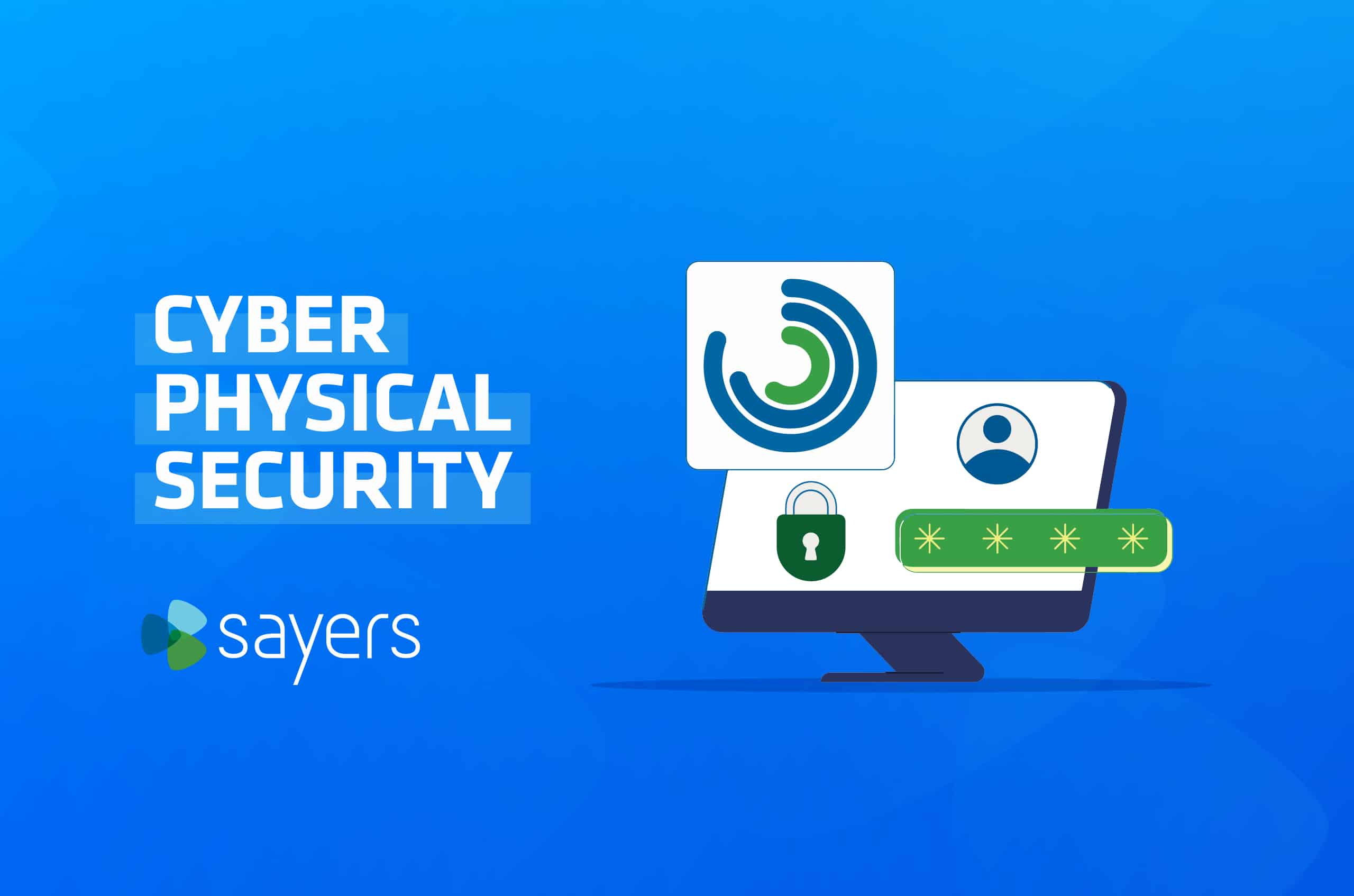Securing Your Cyber-Physical Systems: A Critical Consideration
Posted December 20, 2023 by Sayers

Today’s industries live at the intersection of our digital and physical worlds. The ever-expanding Internet of Things (IoT) brings tighter integration between your organization’s digital and physical assets.
Those connections also bring greater risks from attacks on cyber-physical systems (CPS) that include critical infrastructure and healthcare environments. Industries are turning to cyber-physical systems security offerings to prevent security breaches and safeguard business continuity.
What Is Cyber-Physical Systems Security?
Smart networked systems with embedded sensors and processors sense, control, and network into IoT devices found in automobiles, building automation systems, medical equipment, manufacturing robotics, and smart grids, to name a few. CPS connects those objects and their data to the Internet and manages their physical processes.
CPSs are systems engineered to orchestrate sensing, computation, control, networking, and analytics to interact with the physical world (including humans). They underpin all connected IT, operational technology (OT), and IoT efforts where security considerations span both the cyber and physical worlds.
Cyber-physical systems bring together the capabilities and risks of both IT and OT.
The Growing Threat Landscape For Cyber-Physical Systems
As cyber-physical systems expand in number and size, attack surfaces increase and bad actors have more opportunity to wreak havoc. A breach in OT can lead to physical consequences, safety risks, disrupted operations, and financial losses. These risks span a variety of industries, for example:
- In healthcare, cyber-physical systems include medical devices connected to hospital networks, facilitating patient care and robotic surgery. The risks of ransomware and cyber-physical attacks interfering with those technologies could bring potentially devasting results.
- In manufacturing, companies worry that hackers could start machinery remotely and injure employees.
- In oil and gas, Colonial Pipeline stopped all its fuel processing for days when it fell victim to a ransomware attack, leading to fuel supply shortages and panic buying of gas in several southeastern states.
- In commercial real estate, buildings’ internal sprinkler or HVAC systems could be controlled by bad actors, damaging property and disrupting workplaces.
Regardless of industry, top security-related risks of cyber-physical systems range from financial repercussions and reduced product quality to equipment damage and operational shutdowns.
Cyber-Physical Systems Security Differs From IT Security
In addition to the security concerns above, critical infrastructure sectors such as healthcare, food and agriculture, transportation systems, energy, and utilities have to address increasing regulatory compliance requirements for their cyber-physical systems.
Several vendors have developed CPS protection platforms to secure interconnected systems and ensure critical infrastructures, control systems, and essential processes remain reliable.
Such CPS security measures can mitigate the potential impact of cyber-physical threats on operational technology such as:
- Supervisory control and data acquisition (SCADA) systems that monitor and control industrial processes and critical infrastructure such as power plants and water treatment facilities
- Programmable logic controllers (PLCs) that control machinery and industrial processes based on programming logic
- Distributed control systems (DCSs) that manage and control industrial processes in manufacturing, oil and gas, and chemical industries
- Smart sensors and actuators embedded in industrial equipment to collect data and initiate actions based on the information received (think of pressure sensors, temperature sensors, and actuators controlling valves or motors)
- Robotics used in manufacturing or surgical processes to perform tasks with precision, often in collaboration with people.
CPS protection platform vendors recognize the inherent differences between CPS and enterprise IT systems. CPS assets tend to have longer lifecycles and 24/7 uptime – any downtime can cause significant losses. While the latest security patching is desirable in IT cybersecurity, security patching in CPS can be unwanted or too complex to even be possible.
Where To Start With Cyber-Physical Systems Security
Where do you start with CPS security? Discovery is the first step, with some key questions to ask about your organization:
- What is on your network?
- What can communicate with what?
- What are the vulnerabilities?
- How are you securing nontraditional IT devices on your network?
- Are you satisfied with the maturity of your CPS security program?
- Do you need help identifying and addressing the gaps?
Audits and assessments can help answer these questions and provide next steps.
Questions? Contact us at Sayers today for help in securing your organization’s cyber-physical systems.


